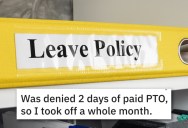Microbiologist Takes Handprint of Her Son After Playing Outside and Incubates the Results
by twistedsifter

Tasha Sturm, a microbiologist and teacher at Cabrillo College, recently took a handprint of her 8-year-old son after he had been playing outside.
She then incubated the handprint for 48 hours and let it sit for another few days, photographing the final result. Bacteria, yeast, fungi, it’s remarkable to see what grew from a simple handprint!

On the science website Microbe World, Sturm explained her process:
“I used a large Kirby Bauer plate (15 x 150 mm) with TSA… Tryptic Soy Agar (TSA) can be purchased through a number of companies (Fisher Scientific, Hardy Diagnostics, Neogen). Most sell it in the powdered form, add water, autoclave, cool to about 55 degrees then pour into the plate, cover with the lid then let solidify. Once the plates are cool then place the hand on the plate making sure to gently pressing the fingers/palm to make contact with the agar.
Cover the plate with the lid and place in a 37 degree C incubator for 24-48 hrs… incubate agar side up. This will grow the normal flora on the hand like Staph., Micrococcus, etc. Take the plate out and let it incubate/set out with the lid on at room temp (22 degrees C) for several days (3+ days). Normal flora will continue to grow (slowly) and yeast/fungi will start to grow…. usually colored colonies (red/pink/yellow). It will also help bacteria like Serratia turn red. Once grown the plate should be treated as a Biohaz and disposed of properly. The plate should not be opened if mold/fungi is present without proper respiratory protection.” [source]

What is a Microbe?
According to Microbe World:
Microbes are single-cell organisms so tiny that millions can fit into the eye of a needle. They are the oldest form of life on earth. Microbe fossils date back more than 3.5 billion years to a time when the Earth was covered with oceans that regularly reached the boiling point, hundreds of millions of years before dinosaurs roamed the earth. Without microbes, we couldn’t eat or breathe. Without us, they’d probably be just fine.
Understanding microbes is vital to understanding the past and the future of ourselves and our planet. Microbes are everywhere. There are more of them on a person’s hand than there are people on the entire planet! Microbes are in the air we breathe, the ground we walk on, the food we eat—they’re even inside us! We couldn’t digest food without them—animals couldn’t, either. Without microbes, plants couldn’t grow, garbage wouldn’t decay and there would be a lot less oxygen to breathe. In fact, without these invisible companions, our planet wouldn’t survive as we know it! [source]


You can see a higher resolution of the handprint here as well as some additional close-ups here and here. [via Colossal]


Categories: BEST OF, SCI/TECH
Tags: · bacteria, educational, experiment, microscopic, top
Trending on TwistedSifter

Parents Emotionally Manipulated Grandparent Into Babysitting For 5 Days, So They Took The Kids To Disney Without The Parents



